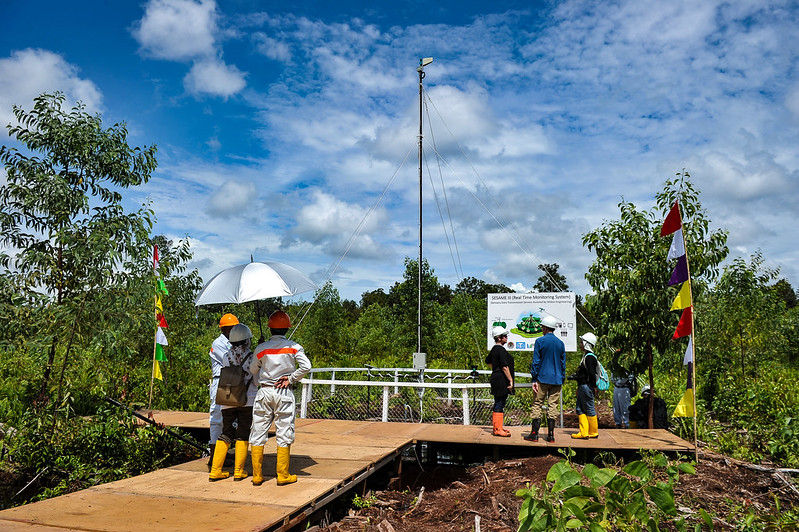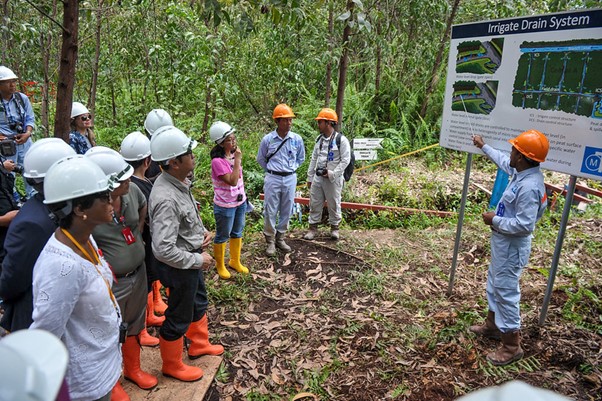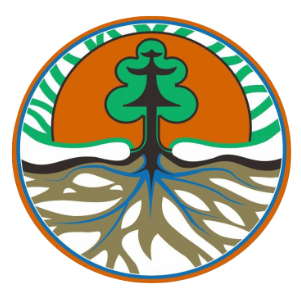
Some years ago, a massive tract of peatlands in the Congo Basin was revealed by scientists to be much more expansive than previously thought. They mapped 30 billion tonnes of carbon in the region, which extends over the Republic of Congo and the Democratic Republic of Congo, demonstrating how significant the area is for climate change mitigation. It stores an equivalent amount of carbon as the aboveground trees in the remaining 96 percent of the Congo basin forest region.
Denis Sonwa, a senior research scientist at the Center for International Forestry Research and World Agroforestry (CIFOR-ICRAF) and the Sustainable Wetlands Adaptation and Mitigation Program (SWAMP) program team, for which he leads activities in Central Africa, the discovery offered an opportunity to apply 20 years of experience and cumulative knowledge regarding peatlands on efforts to try and ensure the conservation of the pristine ecosystems.
Through SWAMP — which is funded by USAID, the U.S. Agency for International Development — CIFOR-ICRAF scientists working in collaboration with the U.S. Forest Service (USFS), and other stakeholders, are helping policymakers manage tropical wetlands to best serve climate change adaptation and mitigation strategies.
Once the carbon stock of the peatland in the Congo Basin were mapped and quantified, the SWAMP team acted quickly to foster engagement and outreach activities.
Scientists and policymakers also conceived a south-south initiative to facilitate an exchange of information on best practices for managing peatlands. The International Tropical Peatlands Center (ITPC), which includes Indonesia, Democratic Republic of Congo (DRC), Republic of Congo – and most recently Peru, was designed to facilitate the exchange of information on efforts to protect high carbon ecosystems, which are considered vital for curbing global warming.
It was launched in 2018 as part of the Global Peatlands Initiative in collaboration with coordinating partners CIFOR, the U.N. Environment Programme and the U.N. Food and Agriculture Organization.
“I like to see natural ecosystems properly managed and these are ecosystems with high importance for improving the global climate profile of our civilization, something I’m deeply passionate about,” Sonwa said during a discussion about his work. “Through the ITPC, an arena within which research and policy can ideally be framed together between scientists and decision makers has been developed.”
Q: Over the years, you and your team have been at the forefront of peatland conservation efforts, could you share some of the key takeaways from that work?
A: Based on experience so far, we realize that inasmuch as the technicalities involved in the protection of peatlands are crucial, refinement is needed through the creation of an enabling environment. So, in a bid to harmonize technicalities and that environment, we are focusing our efforts on governance and effective knowledge generation to provide decision makers like the Peatland Unit of DRC with the necessary information required to not only establish peatland management road maps but also to make the right decisions for the preservation of peatlands. Lastly, we realize that in order to achieve sustainable preservation of peatlands, science policy dialogues are critical, especially when dealing with multiple stakeholders with diverse backgrounds. This has by far helped us take great strides in the right direction over the last three years.
Q: What is the impact of such initiatives as the ITPC?
A: Management of peatlands has been complex and multidimensional by nature — decisionmakers expect CIFOR to provide scientific outputs that can be part of the diverse source of information that they use in their decision-making processes. Through ITPC, scientists can have a better understanding of the complexity of the peatland management situation and use this information to design and co-design research activities.
Looking through the lens from central Africa, ITPC is very helpful because it brings together countries like Indonesia — with longtime experience in peatland management thanks to multiple outputs from CIFOR — to Congo Basin countries where the development of management pathways for these fragile ecosystems is still in the early stages. CIFOR is there to co-produce knowledge and strengthen this south-south cooperation toward sustainable management of peatlands. ITPC is there to improve the science-policy interfaces from the perspective of sustainable management of tropical peatlands, including those of the Congo Basin.
Q: Do you feel your efforts have been fruitful?
A: As we strive to create an enabling environment, we have established effective interactions in place among various stakeholders. One of the critical ways I can confidently allude to this is through the interest that our initiatives have accrued over time. The Peatland Unit initiative regularly invites us to share our expertise with them during their projects and engagements which attests to the trust and value they place in CIFOR-ICRAF. These are some of the indicators that make us understand that our value is highly recognized and that our efforts are effective in producing results.
Currently a team of about 20 scientists, including CIFOR-ICRAF scientists, are working to produce a state of the art knowledge report on the current status of forest peatlands in the Congo Basin. This activity is part of the Central Africa Forest Observatory (OFAC) project funded by the European Union for the Commission for Central African Forests (COMIFAC). Since we are in the early phases of the process, this report, a combination of science review efforts will serve as a baseline for many of our future peatland preservation efforts in the region.
It is impressive that despite being an early effort, we have already achieved tremendous successes. For example, we have already set up networking sessions and organized multiple science policy dialogues between multiple stakeholders which has enhanced valuable information exchanges required to come up with an appropriate and encompassing preservation initiative. We are continuing to work to have all concerned stakeholders interested and involved in the process of preservation of the peatlands.

Q: How might communities/stakeholders both within and beyond DRC participate in efforts to preserve peatlands in their country?
A: Communities and stakeholders need to understand the importance of preserving the recently discovered — or as some might say the recently rediscovered — peatlands in the Congo Basin. We think that stakeholders need to think and act from a multi-sectoral perspective where all sectorial participants understand the indirect and direct effects that peatland preservation might have.
We would also appreciate it if the international community provides the required funding given the limited financial resources to carry out long term preservation. All this can only happen if we understand the value of peatlands in storing carbon among the other essential ecosystem services provided and the importance of this carbon storage not just for the Congo Basin, but for the global community as a whole because we are all in one biosphere. An additional loophole we think can be addressed through international cooperation is capacity building through transfer of skills and knowledge to train nationals based in the Congo basin to manage these peatlands in the long term.
Q: What are your overall targets for peatland preservation in DRC over the next one to five years?
A: The goal of preservation is long term and continuous and thus cannot be limited to one to five years. But in the short term, we are looking forward to having peatland preservation and overall protection within the Congo Basin integrated into the national agenda, government policy, biodiversity policy and climate policy as a normal land management practice across the DRC and Congo Brazzaville (Republic of Congo).
Also given that the peatlands within the two countries happen to be at the intersection of the border of Congo Brazzaville and the Democratic Republic of Congo, we hope that one of the major stakeholders, COMIFAC works hand in hand to create harmonizing guidelines for the preservation of the pristine peatlands in the Congo Basin integrating the needs and interests of all stakeholders across the different countries involved. It is also our hope that the peatland issues became important in the CBFP (Congo Basin Forest Partnership) agenda, so that funding and interventions can be better coordinate and harmonize between partners of the Congo Basin. Within DRC, we also hope to achieve a stakeholder engagement not only at the level of Kinshasa but also at sub-national levels such provinces and at the grass root level with the local communities where these peatlands are located.
Lastly, because these pristine peatlands in the Congo Basin are quite sensitive humid ecosystems, we are also working to have them obtain special focus within the Ramsar Convention for the conservation and sustainable use of wetlands to fast track their long term preservation in a sustainable manner.








